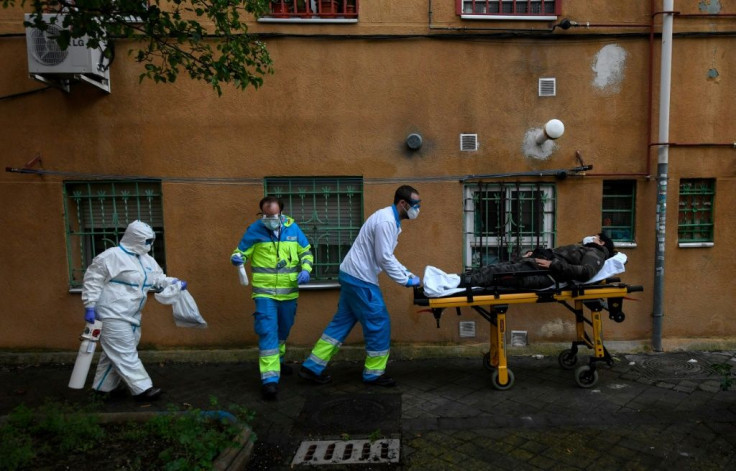Coronavirus US Update: Texas Sisters Die Over A Century Apart From Two Different Global Pandemics
A 96-year-old woman from Texas died last week due to coronavirus. Her sister died over a century ago due to another global pandemic, according to a recent report.
Selma Ryan, who passed away at an assisted living facility in Austin last week wasn’t born yet when her sister Esther died at the age of 5 from the Spanish flu in 1918.
“On April 3, I got a call from the facility that five residents, including my mother, were running a temperature. Over the next five days, I watched through the window as she got sicker and sicker. It was so hard to not be with her,” she added. “Her 96th birthday was April 11. Our family gathered outside her window, but it was obvious that something terrible had happened,” the New York Post quoted Ryan’s daughter Vicki.
Ryan wasn’t tested for the coronavirus infection until after her death. Her daughter said that the Travis County Medical Examiner’s Office confirmed that she had tested positive for COVID-19.
In the current pandemic situation, older adults and individuals with underlying health conditions are asked to socially distance themselves by staying at home and have minimal interaction with other people.
While Ryan died due to the current pandemic that is deadly for older adults, her sister Esther had died during the 1918 pandemic which was fatal for young children.
The U.S. Centers for Disease Control and Prevention reported that the 1918 pandemic infected 500 million individuals worldwide- a third of the global population at that time. The Spanish flu had claimed the lives of over 50 million people worldwide including 675,000 in the U.S.

The 1918 flu pandemic, otherwise called the Spanish flu, was unusually deadly influenza and the most severe pandemic in recent history. It was caused by an H1N1 virus with the genes of avian origin. It spread throughout the world during 1918-1919. The Spanish flu in the U.S. was first identified in military personnel in spring 1918.
The unique feature of the Spanish flu was that the mortality rates were high in healthy people including those in the age group 20 to 40. Even though the 1918 H1N1 virus has been synthesized and evaluated, it is still not completely understood as to what made it so devastating.
© Copyright IBTimes 2025. All rights reserved.






















